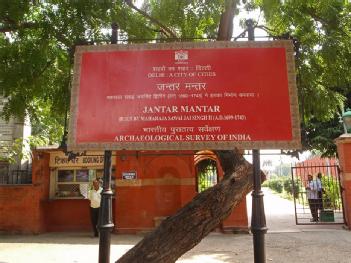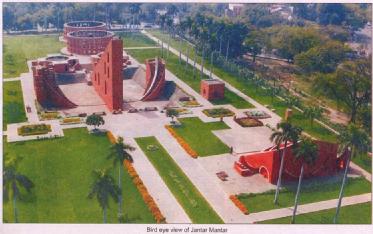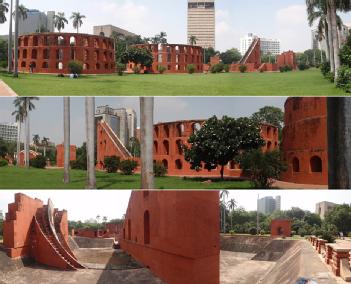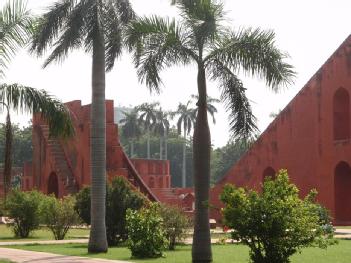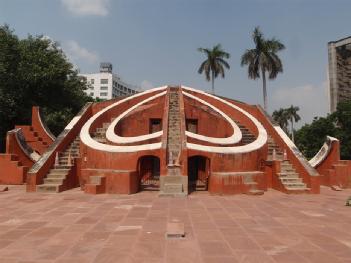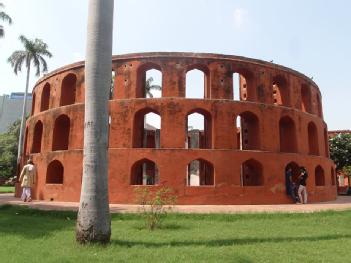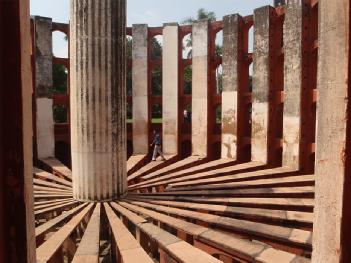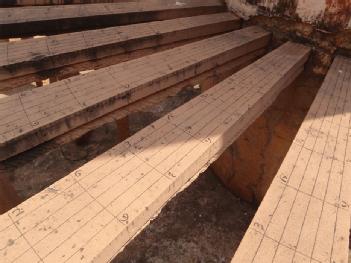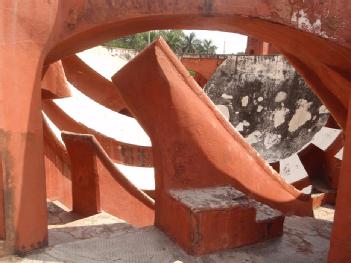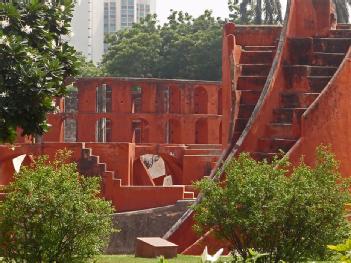
 |
Jantar Mantar in Delhi |
110001 New Delhi, India (Delhi) |
|
| Address |
Sansad Marg, Connaught Place
|
| Floor area | only roughly guessed: 12 000 m² / 129 167 ft² |
Museum typ
Exhibition
Astronomy
- Architecture
|
Opening times
|
|||||
|
|
We don't know the fees. | ||||
| Contact |
|
||||
| Homepage | www.jantarmantar.org | ||||
Our page for Jantar Mantar in Delhi in New Delhi, India, is not yet administrated by a Radiomuseum.org member. Please write to us about your experience with this museum, for corrections of our data or sending photos by using the Contact Form to the Museum Finder.
| Location / Directions |
Busverbindungen zur Station Jantar Mantar: 70 89 100A 100EXT 180 181 185 187 213 271 327 342 384 390 400 |
| Description | From Wikipedia: The Mantar Mantra (literally the 'instrument and formula' and often called the Jantar Mantar), is located in the modern city of New Delhi, Delhi. It consists of 13 architectural astronomy instruments. The site is one of five built by Maharaja Jai Singh II of Jaipur, from 1724 onwards, as he was given by Mughal emperor Muhammad Shah the task of revising the calendar and astronomical tables. There is plaque fixed on one of the structures in the Jantar Mantar observatory in New Delhi that was placed there in 1910 mistakenly dating the construction of the complex to the year 1710. Later research, though, suggests 1724 as the actual year of construction. The primary purpose of the observatory was to compile astronomical tables, and to predict the times and movements of the sun, moon and planets. Some of these purposes nowadays would be classified as astronomy. Purpose of Individual StructuresThere are distinct instruments within the observatory of Jantar Mantar in New Delhi: the Samrat Yantra, the Ram Yantra, the Jayaprakash, and the Mishra yantras.* Samrat Yantra: The Samrat Yantra, or Supreme Instrument, is a giant triangle that is basically an equal hour sundial. It is 70 feet high, 114 feet long at the base, and 10 feet thick. It has a 128-foot-long (39 m) hypotenuse that is parallel to the Earth's axis and points toward the North Pole. On either side of the triangle is a quadrant with graduations indicating hours, minutes, and seconds. At the time of the Samrat Yantra's construction, sundials already existed, but the Samrat Yantra turned the basic sundial into a precision tool for measuring declination and other related coordinates of various heavenly bodies. * Jayaprakash Yantra: The Jayaprakash consists of hollowed out hemispheres with markings on their concave surfaces. Crosswires were stretched between points on their rim. From inside the Ram, an observer could align the position of a star with various markings or a window's edge. * Mishra Yantra: The Mishra yantras were able to indicate when it was noon in various cities all over the world and was the only structure in the observatory not invented by Jai Singh II. |
Radiomuseum.org presents here one of the many museum pages. We try to bring data for your direct information about all that is relevant. In the list (link above right) you find the complete listing of museums related to "Radio & Co." we have information of. Please help us to be complete and up to date by using the contact form above.
[dsp_museum_detail.cfm]
| Data Compliance | More Information |

 cornell.edu
cornell.edu 